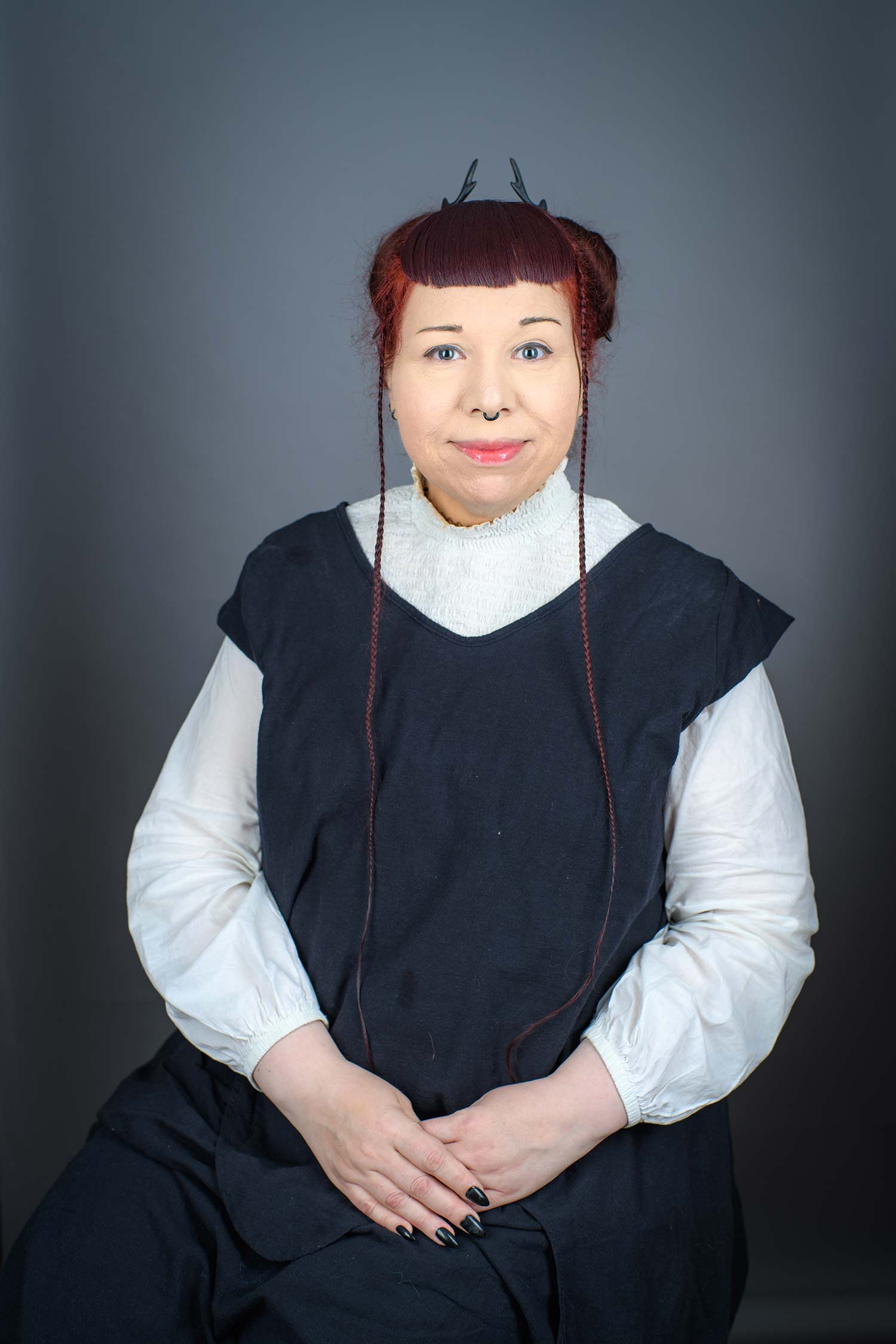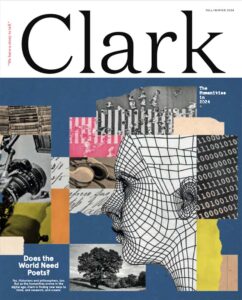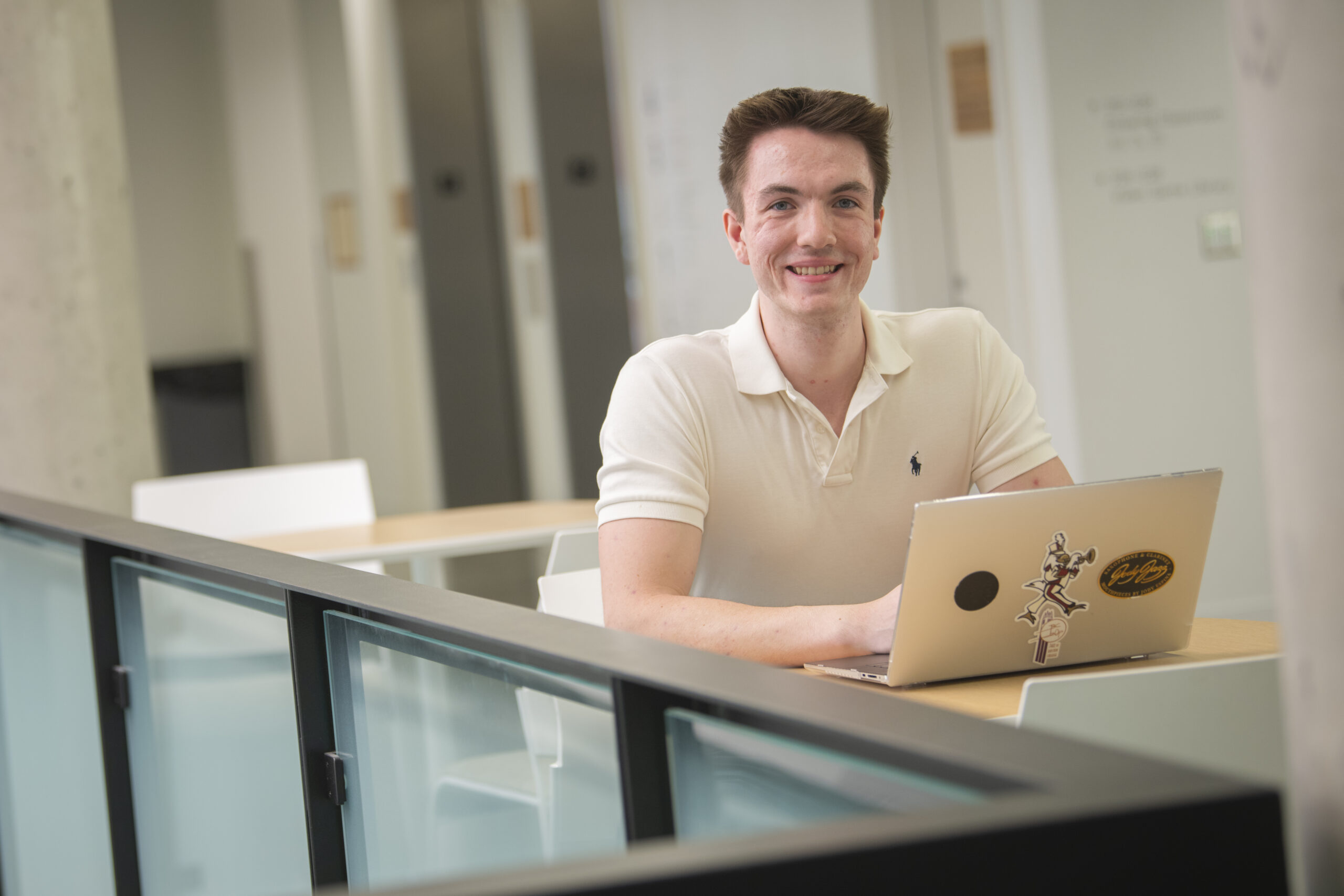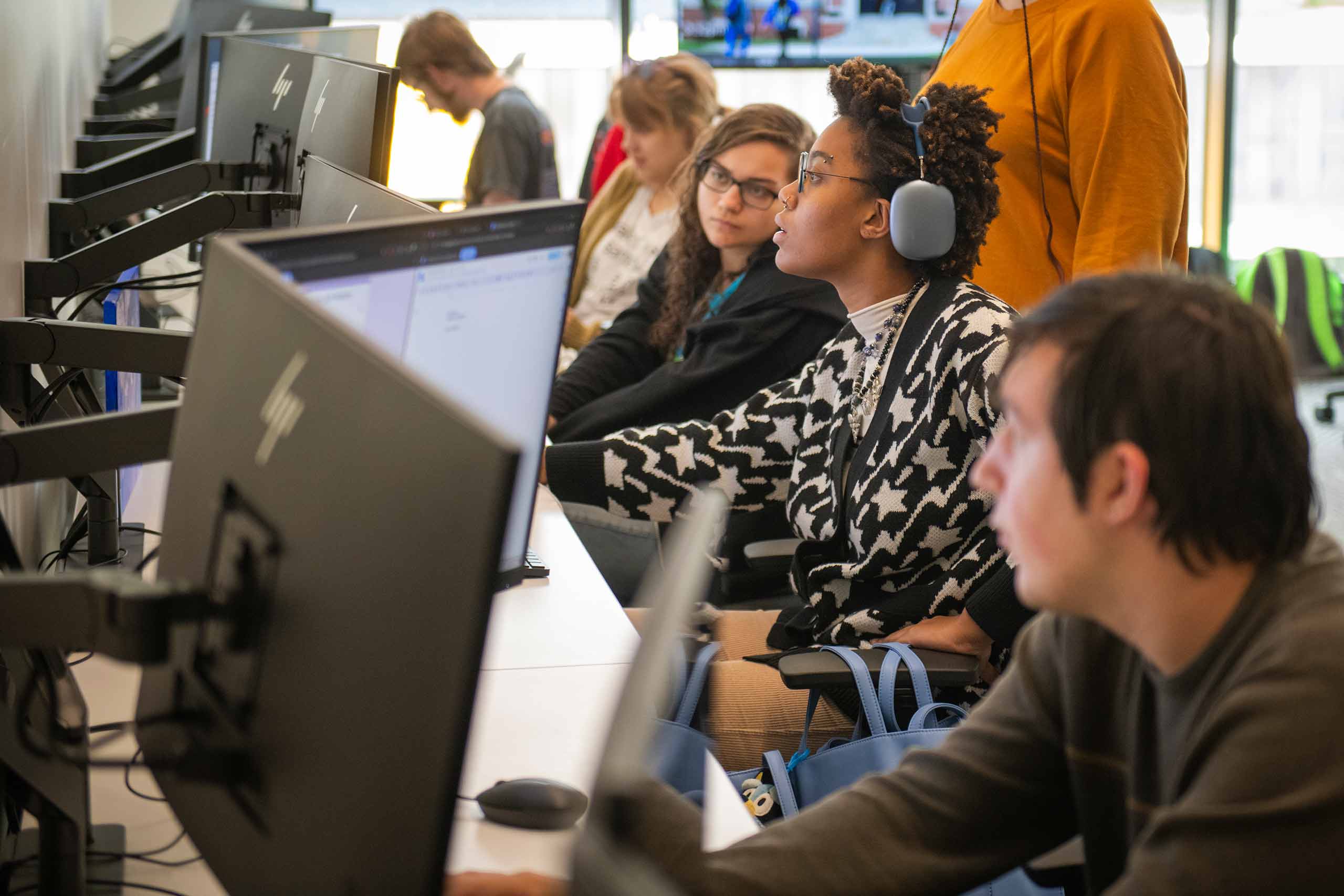Storytelling lies at the heart of what makes us human, from primitive etchings on cave walls to tales of astronauts leaving footprints on the moon. It’s the thread running through the arts and humanities, according to Professor TERRASA ULM, director of the undergraduate program in interactive media in Clark’s Becker School of Design & Technology.
“People are constantly engaged in storytelling. We’re picking up stories from everyone else, and then those become part of the stories we’re telling,” Ulm says. “We’re passing on genetics, and we’re also passing on stories from a millennia ago. It’s beautiful to me. Storytelling is everything that is the human experience.”
Interactive media, too, “is all about storytelling,” she says. Students develop stories by programming games, writing narratives, developing characters, and creating art and music. They integrate what they’ve learned in liberal arts classes at Clark to build engaging digital experiences.
“Students go to a university to become a whole person, to engage with their passions on a deeper level of understanding, and to be part of society and humanity,” Ulm says.
For that reason, in the Becker School, “we’re not just about teaching tools. We use them and explore them because we’re curious people, but ultimately, we create dynamic experiences and approach our passions through the humanities.”
Ulm integrates the arts and humanities, along with an interactive storytelling approach, into her classes and research.
For the past two years, she has taught a class, Interactive Theater, with professors Ezra Cove and Amanda Theinert of the Becker School and Jessie Darrell-Jarbadan of Visual and Performing Arts. The plays have no scripts or pre-scripted dialogue—just “worlds” written by Ulm. Students develop characters, sets, props, and costumes. Darrell-Jarbadan offers costume design expertise, Cove creates 3D models that bring costumes to life, and Theinert oversees set and lighting design.
Students apply methods used in game character design, “writing just enough backstories about their characters so they can embody them,” Ulm says. “There is no audience—there are only participants who walk in and engage with everybody to figure out what the story is, to follow the story, to discover the story. We have no idea what they’re going to say or do.”
Through another class, Embodying Virtual Avatars, Ulm covers the history of objects and images that humans have used to represent themselves in imagined worlds and spaces, from dolls in childhood play to digital personas in games and social media. Students create visual designs and 3D models of their avatars, develop backstories, and livestream final performances on the Twitch platform.
“By getting into these characters, you understand the power of representing yourself and being able to tell your story in your own way—not being confined by stereotypes and how people see you,” Ulm says.
As part of a three-year research project led by Professor Timothy Downs of the Department of Sustainability and Social Justice, Ulm is working with students and faculty to design an extended reality (XR) project that uses interactive storytelling to help communities understand how climate change will impact water resources in Mexico.
“STORYTELLING IS EVERYTHING THAT IS THE HUMAN EXPERIENCE.”
Outside of Clark, Ulm tells stories through her interactive media art, including avatars, alternate reality games—known as ARGs—and other digital experiences that connect “the reality of your lived experience and the reality of a fictional story.”
“Storytelling is a collaborative experience,” Ulm says. “The story I’m telling isn’t told until someone else is involved in hearing it and putting their own imagination into it. We’re all engaged in storytelling together.” ▣






